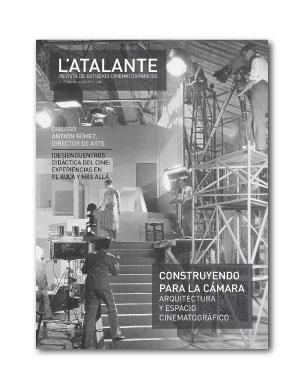Synergies between manga and auteur cinema: Sion Sono, Usamaru Furuya and Minoru Furuya
Published 2014-01-01
Keywords
- Manga,
- comics,
- anime,
- live-action cinema,
- synergies
- Japan,
- Sion Sono,
- Furuya. ...More
How to Cite
Abstract
Japan is one of the largest producers of comic book adaptations in the world. It is a well-known fact that the Japanese publishing industry and its most prestigious animation studios have a close relationship that is reflected in the release of anime film versions of every commercial manga that has been a hit with readers. After a successful animated adaptation, the next step in the process, in addition to the corresponding video game adaptation, is often the production of an adaptation to live-action cinema, a project that is generally problematic due to the conflicts of interest raised by the question of fidelity to the original, the budget assigned and the final result for the fans. Manga adaptations are not limited to this commercial cycle, as in their filmographies certain directors reveal an aesthetic and thematic interest closely related to certain works of the more alternative mangaka, generally restricted to specific genres. Thus, well-known directors, such as Sion Sono, have been allowed greater creative freedom to develop their relationship with the comic, with the manga as a source of inspiration or as an extension of the universe of their films.
Downloads
References
BRENNER, Robin E. (2007). Understanding Manga and Anime. Westport: Libraries Unlimited.
BORT, Iván (2012). Nuevos paradigmas en los telones del relato audiovisual contemporáneo: partículas narrativas de apertura y cierre en las series de televisión dramáticas norteamericanas. Tesis doctoral. Castellón: Universitat Jaume I.
CUETO, Roberto (2003). Hijos de Neotokio. Claves para una estética geopolítica del nuevo cine japonés. En J. COSTA, et al. (eds.), El principio del fin: tendencias y efectivos del novísimo cine japonés (pp. 13-37). Barcelona: Paidós.
DE FELIPE, Fernando e GÓMEZ, Iván (2008). Adaptación. Barcelona: Blanquerna.
GASCA, Luis y GUBERN, Román (2001). El discurso del comic. Madrid: Ediciones Cátedra.
GUBERN, Román (1974). El lenguaje de los comics. Barcelona: Edicions 62.
MCCLOUD, Scott (2005). Entender el cómic: el arte invisible. Bilbao: Astiberri Ediciones.
NORRIS, Craig (2009). Manga, anime and visual art culture. En Y. SUGIMOTO (Ed.), The Cambridge Companion to Modern Japanese Culture. Cambridge: Cambridge University Press.
SALA, Ángel (2003a). Las mil caras del anime. En J. ZAPATER, et al. (eds.), Dibujos en el vacío. Claves del cine japonés de animación. Valencia: IVAM Documentos 11.
—(2003b). La asimilación post-moderna de los géneros populares japoneses. En J. COSTA, et al. (eds.), El principio del fin: tendencias y efectivos del novísimo cine japonés (pp. 195-228). Barcelona: Paidós.
STOJKOVIC, Jelena (2010) Alternative Japan. En J. BERRA, Directory of World Cinema: Japan (pp. 34-37). Bristol: Intellect Ltd.

